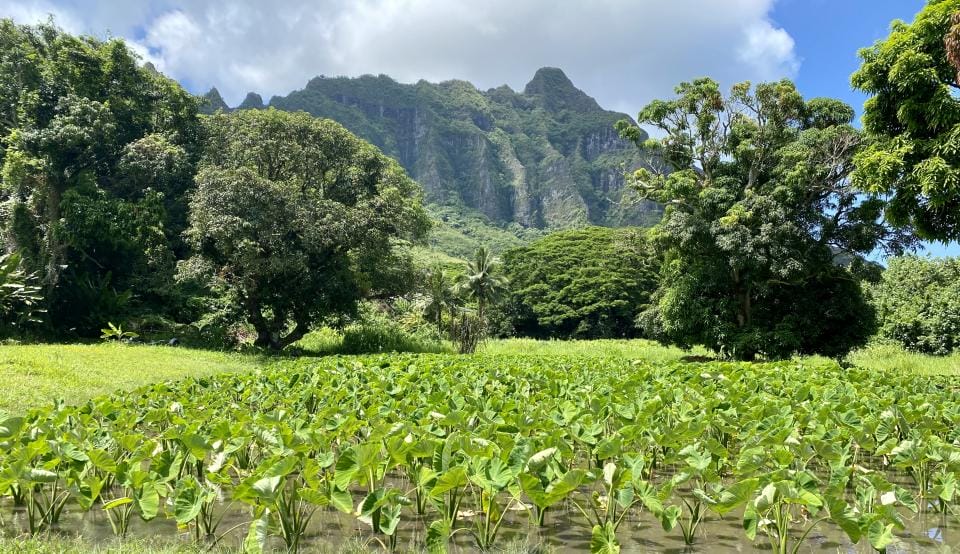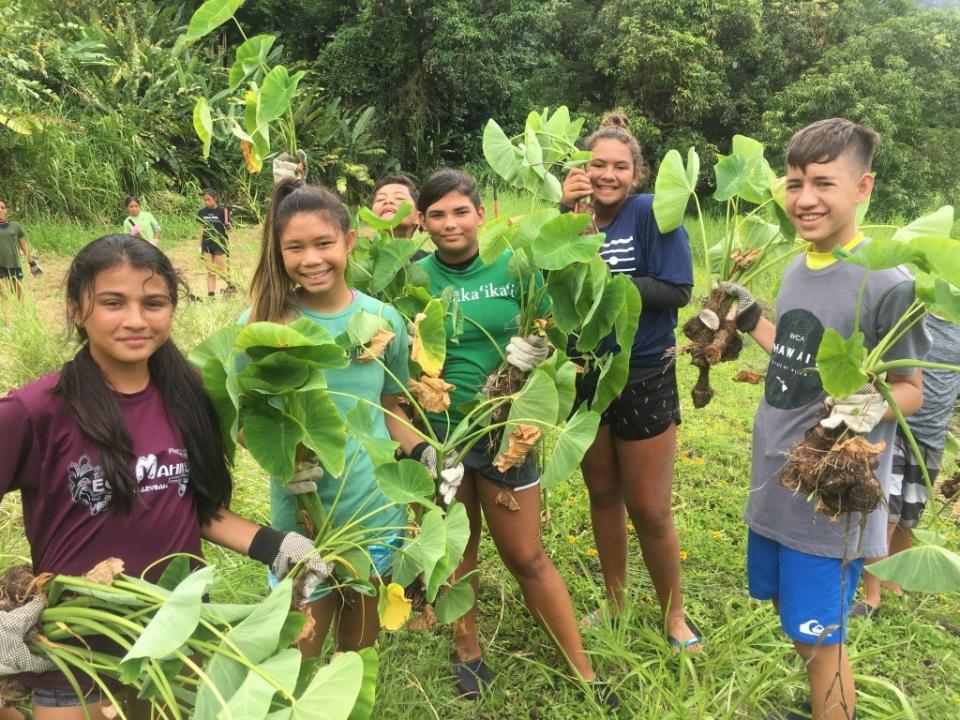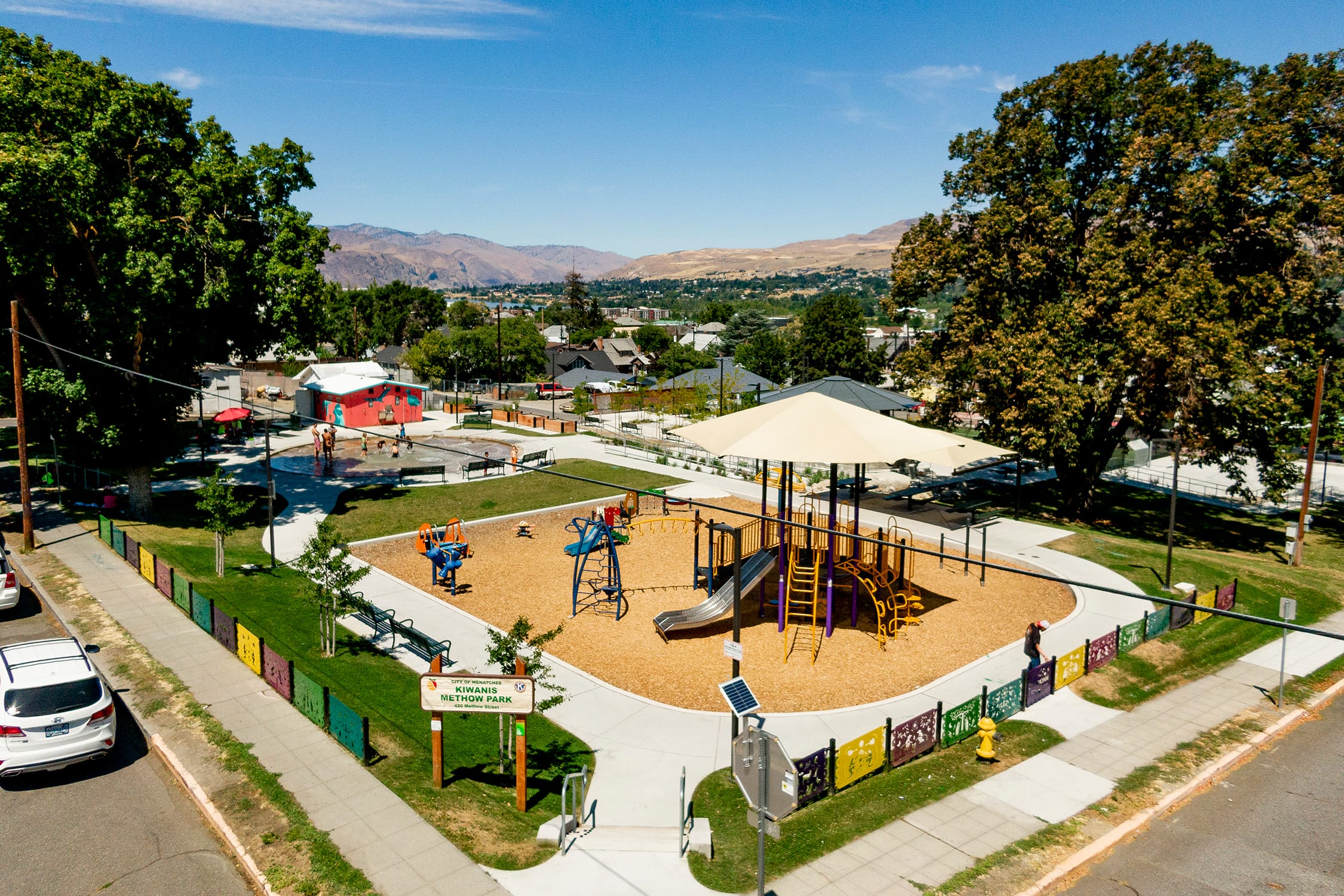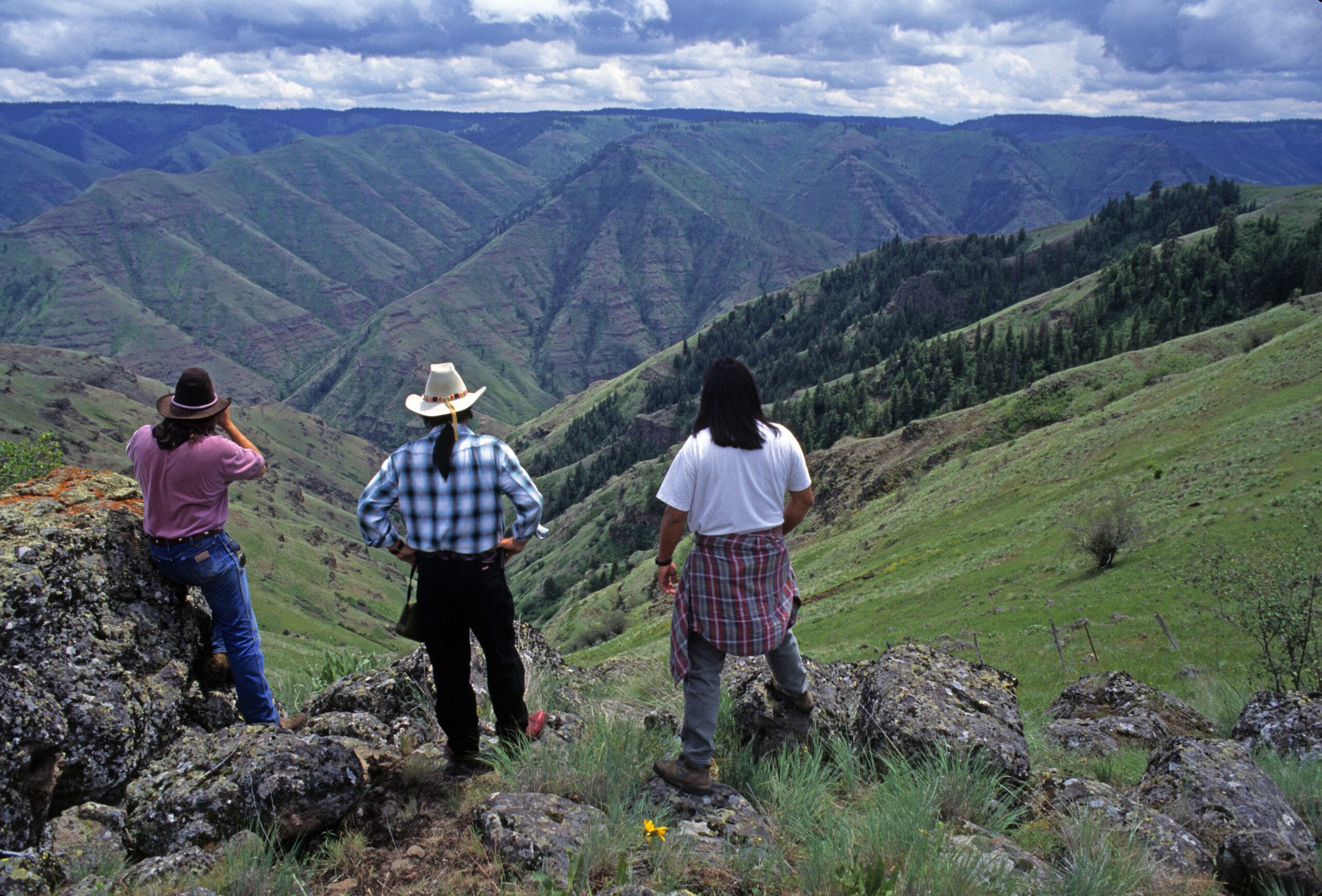
Roots run deep on this ancient Oʻahu farm
Roots run deep on this ancient Oʻahu farm
Kolea Fukumitsu knows kalo. The starchy vegetable, also known as taro, is a traditional staple of Hawaiian diets, and Fukumitsu is in the ninth generation of his family who’ve cultivated it on the island of Oʻahu.
Fukumitsu grew up planting kalo at his family’s farm in Hakipuʻu, a secluded tropical valley on Oʻahu’s windward shore that’s been in continuous cultivation for hundreds of years. “I learned everything I know from my kūpuna (ancestors) and my makua (parents),” Fukumitsu says. “This ʻāina (land, that which feeds) here has a lot of history.”
The valley’s climate and topography make it an ideal place to grow kalo: the steep ridges of the Ko‘olau Mountains rake rain out of the clouds, funneling abundant fresh water down to the valley floor. (Hakipuʻu means “broken hill,” a reference to the jagged mountains that frame the valley.) Ancient ʻauwai, a carefully engineered, gravity-powered irrigation system, fills the loʻi kalo (wetlands taro fields), nourishing the plants before returning the water to the stream and out into the ocean.
 Along with growing food, loʻi kalo create habitat for native birds and fish, protect clean water, and prevent erosion and runoff into the delicate coral reefs downstream.Photo credit: Leslie Uptain
Along with growing food, loʻi kalo create habitat for native birds and fish, protect clean water, and prevent erosion and runoff into the delicate coral reefs downstream.Photo credit: Leslie Uptain
Along with growing food, loʻi kalo create habitat for native birds and fish, protect clean water, and prevent erosion and runoff into the delicate coral reefs downstream. “The ʻauwai system is a sustainable growing method that this valley’s farmers have perfected through generations,” says Trust for Public Land project manager Reyna Ramolete. “Kalo farming is a testament to Hawaiian innovation in hydrology, engineering, biology, and sustainable agriculture.”
For many Native Hawaiian families, kalo is more than a source of nutrients, says Kahiau Wallace, president of local nonprofit Hoʻāla ‘Āina Kūpono: “In Hawaiian cosmology, Wākea (Sky Father) and Papa (Earth Mother) birth a daughter, Hoʻohōkūkalani, who gives birth a to a keiki ʻaluʻalu or premature fetus. The family buries this keiki and eventually, fed by the tears of his family, the first kalo sprouts from that spot, his name is Hāloanakalaukapalili. Hoʻohōkūkalani has a second child and he is named Hāloa (Long Breath), in honor of his older brother. Hāloa becomes the first Hawaiian man, and Hāloanakalaukapalili is the elder sibling of the Hawaiian people.”
“We trace our roots to kalo. Our genealogy reinforces the Hawaiian worldview that kanaka (people) and ʻāina (land) are ‘ohana (family),” Wallace continues. “And when we plant and take care of kalo, kalo will nourish and feed us in return.”
“When we were kids and growing up, we’d fish one day and hunt the next,” Fukumitsu recalls of his childhood in Hakipuʻu. “But mostly, we’d plant. [Farming kalo is] a lot of hard work.” It’s a way of life he’s now passing on to his kids: “I believe the protection of our land, native plants, wildlife, and natural resources should be a priority,” says Fukumitsu’s 12-year old daughter Navahine.“This land in Hakipu‘u has been home to generations of kalo and so much native life it deserves to be preserved for our generation, the next generation, and every generation to come.” The family has also welcomed neighbors, students, and other community members to the farm, to share their knowledge of traditional methods—and share the bounty of kalo that they grow.
 The Fukumitsu family has also welcomed neighbors, students, and other community members to the farm, to share their knowledge of traditional methods—and share the bounty of kalo that they grow.Photo credit: The Trust for Public Land
The Fukumitsu family has also welcomed neighbors, students, and other community members to the farm, to share their knowledge of traditional methods—and share the bounty of kalo that they grow.Photo credit: The Trust for Public Land
But for more than a decade, the future of this historic farmland has been uncertain. Financial pressures forced the family to reluctantly consider offers from private developers to buy the land, which could have spelled the end of kalo farming here. That would mean one less source of healthy, locally produced food for the community, harm to the valley’s delicate ecosystems, and the end of a thriving tradition of Native Hawaiian stewardship and cultural connection to the land.
We’ve been working alongside the Fukumitsu family and the Hakipuʻu community to save this extraordinary place. With help from Trust for Public Land supporters, we purchased the farm in 2016, then worked with the community to raise public funding to preserve it forever. And last month, we transferred ownership to Ho’āla ‘Āina Kūpono, a local nonprofit with a mission to perpetuate traditional wisdom and care for the land and the community, through education, community workdays, and ecological stewardship.
Ho’āla ‘Āina Kūpono’s members have worked alongside the Fukumitsu family to care for Hakipuʻu, helping harvest the kalo and make it into poi (a fermented paste that’s a staple of traditional Hawaiian diets) and distribute the food to the greater community. With guidance from the Fukumitsu family, Ho’āla ‘Āina Kūpono will keep growing kalo at Hakipuʻu, and create new opportunities for local students and community members to work at the farm, keeping these traditional methods—and their crucial ecological benefits—alive.
“We look forward to working in partnership with the Hakipu‘u community, area schools, and kuleana descendants to steward this ʻāina as a kalo farm and an outdoor classroom where students and the public can learn about regenerative agriculture, watershed and natural resource management, a living Hawaiian culture, and aloha ʻāina values,” says Wallace.
Now that the farm is protected, Kolea is looking ahead to its future and the expanded role it can play in perpetuating vital ties between Native Hawaiian people and the land. “My dream is for the future, for our kids,” he says. “For instilling the proper knowledge and skills they need to survive.”
This project was funded by the State Legacy Land Conservation Program and the City and County of Honolulu’s Clean Water and Natural Land Program, which co-holds a conservation easement on the property with the Hawaiian Islands Land Trust.
This raw, beautiful landscape in Southern California is home to Indigenous heritage sites, and it provides critical habitat for threatened and endangered species. Urge President Biden to safeguard this extraordinary landscape today!


Donate to become a member, and you’ll receive a subscription to Land&People magazine, our biannual publication featuring exclusive, inspiring stories about our work connecting everyone to the outdoors.
See how our supporters are helping us connect people to the outdoors across the country.






